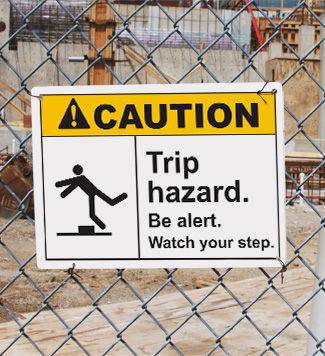6 Steps for Improving Construction Housekeeping

Electric saws whirl as Jose Barranda walks through a construction site in Albuquerque, New Mexico. He's on the lookout for anything amiss during his routine safety inspections. Shoving a soda can into a garbage bag, he says he routinely picks up after other workers, which is sometimes frustrating. Construction is a messy business by nature, but cleanliness is part of keeping workers safe, according to the Occupational Safety and Health Administration.
Make Cleanliness a Top Priority
"One of my peeves? Subs not cleaning up after themselves," Barranda said. "They leave bottles and cups and all other varieties of garbage scattered everywhere, and when you ask them to clean up they get pissed off and think I'm being unreasonable. It drives me crazy."
Workplaces are to ensure passageways, storerooms, and any other work areas are clean, orderly, and sanitary. This is a rule per OSHA's general safety requirement for walking and working surfaces (OSHA 1910.22 and 1926.25(a)). In 2017, OSHA reported 92 violations of its housekeeping rule in the construction industry.
Some of the most common accidents that occur on a construction site include fire and crane accidents, electrocution, and slips, trips, and falls. A disorderly work environment can lead to unsafe situations, which can increase the risks of injury to workers. For example, a worker can trip on a protruding piece of lumber, slip on a messy spill, or be struck by falling debris.
"I have seen material left on top of places it didn't belong or staging areas open, unattended with various equipment," Barranda said accounting of some of the housekeeping hazards he has addressed in the past. "It can cause a problem."
High-Level Safety
Workplaces can easily tackle and maintain effective housekeeping. Focus on housekeeping tasks using a job hazard analysis. Use these practices to help prevent unnecessary injury to anyone on the construction site and improve housekeeping:
- Clear obstructions: Keep travel lines clear by removing hazards, such as slips, trips and falls. Ensure walking and working surfaces are large enough to perform work safely.
- Keep tidy: Workers should make a habit of cleaning as they go and picking up after themselves. Are eye wash stations clean and ready to use?
- Prevent falling objects: Employees should use tool lanyards and keep items away from edges. Examine work areas for damage and instability including guardrails, fall protection equipment, toe boards, and construction scaffolding.
- Put things away: Neatly store tools and other materials properly, including personal protective equipment. Allow workers time at the end of their shift to clean up the work area.
- Pay attention: Walk the layout and routes of a construction site, paying attention to trouble areas, including floor openings. Make sure tools, structures, PPE, machinery, and emergency equipment are in good repair.
- Improve communication: Look for ways to improve communication and safety on the worksite. Evaluate whether labels and signs are accurate, in the right place, necessary and compliant with OSHA.
Take safety to a higher level in construction by improving housekeeping. Minimizing risks is not just a job for one person. Remind workers that everyone has a role in safety and keeping the jobsite orderly. Use incentives for cleanliness or checklists and daily huddles. It's important for everyone on the construction site to remain vigilant and communicate housekeeping best practices. "It might not be your mess, but it could be yours or someone else's injury," Barranda said.
Related Resources

Tips to Break Fall Trends in the Workplace
While OSHA's top 10 most violated safety standards for 2020 show fall protection at number one, there are ...
Read
OSHA and Ironworkers Partner for Safety Outreach
OSHA and Ironworkers are partnering up to help boost safety programs and prevent the most common injuries, ...
Read
Stand-Down Underscores Importance of Fall Protection
OSHA's National Safety Stand-Down, happening May 4-8, 2020, works to minimize the number of workplace falls ...
Read.png)






